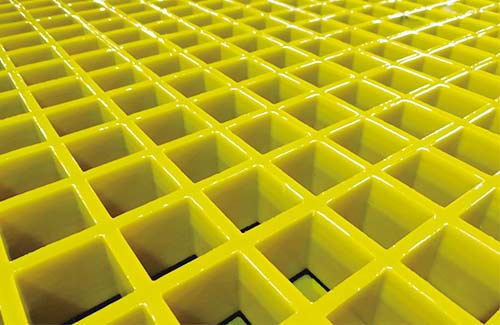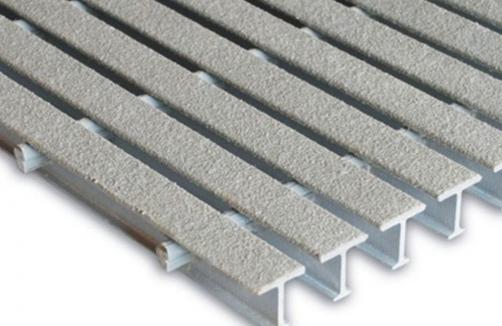Installazione e manutenzione dei grigliati fenolici: Guida completa per la sicurezza e la durata
Il grigliato fenolico è una scelta popolare per gli ambienti industriali, commerciali e pericolosi grazie alla sua eccezionale forza, resistenza alla corrosione e leggerezza. Tuttavia, per garantire prestazioni ottimali e una lunga durata, sono essenziali un'installazione e una manutenzione corrette. Sia che si lavori in impianti chimici, strutture marine o produzioni pesanti, la comprensione delle migliori pratiche per il grigliato fenolico può prevenire i rischi per la sicurezza e prolungarne la vita utile.
Che cos'è il grigliato fenolico?

Il grigliato fenolico è un materiale composito costituito da strati di impiallacciature di legno impregnate di resina fenolica e compresse ad alto calore e pressione. Questo processo crea un grigliato forte, non conduttivo e resistente al fuoco, adatto ad applicazioni in cui i grigliati tradizionali in acciaio possono cedere a causa della corrosione o del peso.
Sfide comuni con il grigliato fenolico
Prima di immergersi nell'installazione e nella manutenzione, è importante affrontare i potenziali problemi che possono sorgere:
- Caricamento non uniforme - Un'errata distribuzione dei pesi può causare deformazioni o crepe.
- Esposizione all'umidità - Sebbene il grigliato fenolico sia resistente all'acqua, l'immersione prolungata può degradare il materiale.
- Danno chimico - Alcune sostanze chimiche possono indebolire la resina, provocando un cedimento strutturale.
- Installazione non corretta - Un fissaggio o un supporto non corretto possono compromettere la sicurezza.
Comprendendo queste sfide, è possibile adottare misure proattive per evitare costose riparazioni e garantire un ambiente di lavoro sicuro.
Installazione passo per passo del grigliato fenolico
1. Preparazione del sito
- Pulire l'area: Rimuovere detriti, olio o sostanze chimiche che potrebbero interferire con l'installazione.
- Controllare le strutture di supporto: Assicurarsi che i supporti sottostanti siano in piano e in grado di sopportare il carico.
2. Taglio e sagomatura di griglie
- Per tagliare il grigliato fenolico, utilizzare una sega circolare con una lama appropriata.
- Evitare di esercitare una forza eccessiva per evitare la formazione di schegge.
- Per le forme personalizzate, consultare il produttore per le tecniche di taglio consigliate.
3. Fissaggio corretto
- Per fissare la griglia, utilizzare elementi di fissaggio resistenti alla corrosione (ad esempio, bulloni in acciaio inox).
- Assicurare una distanza uniforme tra gli elementi di fissaggio per evitare la deformazione.
- Evitare un serraggio eccessivo, che potrebbe incrinare il materiale.
4. Protezione dei bordi
- Installare zoccoli o protezioni lungo il perimetro per evitare rischi di inciampo.
- Utilizzare rivestimenti antiscivolo per le aree ad alto traffico.
Consigli per la manutenzione del grigliato fenolico
Una manutenzione regolare può allungare notevolmente la vita del vostro grigliato fenolico. Ecco come fare:
1. Ispezione dei danni
- Verificare l'assenza di crepe, delaminazione o usura eccessiva.
- Cercate segni di esposizione a sostanze chimiche o danni causati dall'acqua.
2. Pulire regolarmente
- Rimuovere i detriti sciolti con una scopa o con aria compressa.
- Per le macchie più ostinate, utilizzare un detergente delicato e acqua.
- Evitare prodotti chimici aggressivi che potrebbero danneggiare la resina.
3. Affrontare tempestivamente i problemi minori
- Riparare le piccole crepe con sigillanti a base epossidica.
- Sostituire gli elementi di fissaggio danneggiati per evitare ulteriori sollecitazioni sulla griglia.
4. Monitoraggio delle condizioni di carico
- Assicurarsi che la griglia non sia sovraccaricata oltre la sua capacità.
- Regolare la distribuzione del peso se si rileva un carico non uniforme.
Perché l'installazione e la manutenzione sono importanti
Investire tempo in una corretta installazione e manutenzione può sembrare scoraggiante, ma i vantaggi superano di gran lunga i costi. Un grigliato fenolico installato correttamente riduce il rischio di incidenti, minimizza i tempi di inattività dovuti alle riparazioni e mantiene la conformità alle norme di sicurezza. Inoltre, un grigliato ben mantenuto conserva la sua integrità strutturale, con un conseguente risparmio economico nel lungo periodo.
Conclusione
Il grigliato fenolico è un materiale resistente e versatile, ma le sue prestazioni dipendono dalla corretta installazione e dalla regolare manutenzione. Seguendo le linee guida descritte in questa guida, potrete assicurarvi che il vostro grigliato fenolico rimanga sicuro, resistente e funzionale per gli anni a venire.
Condividi questa guida: Se queste informazioni vi sono state utili, non esitate a condividerle con i vostri colleghi o colleghi del settore. Una conoscenza adeguata porta a una maggiore sicurezza ed efficienza sul posto di lavoro!







